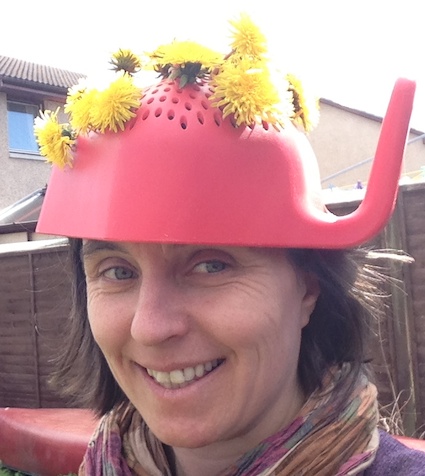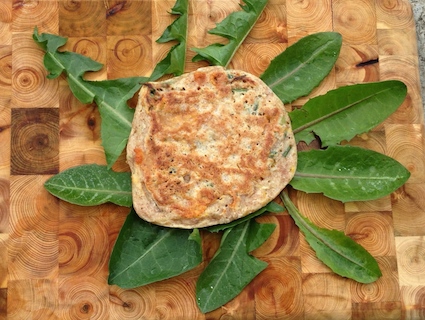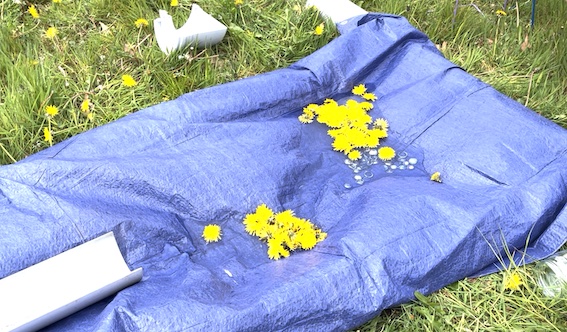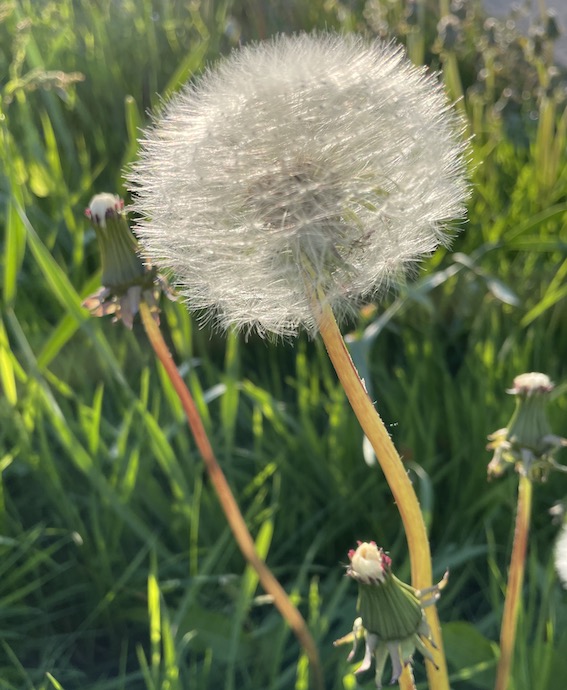At this time of year, wildflowers are beginning to bloom, one of the best of which has to be the dandelion. It is a sure sign that the soil is warming up and spring has arrived. So enjoy some playful explorations for all ages.
1. Enabling children to pick dandelions with due thought and care
This blog post is about picking dandelions for play purposes. Occasionally I encounter someone who expresses their concern about encouraging children to pick and play with wildflowers. Usually reasons given include bees needing the plants to gather nectar and pollen native wildflower or thinking it is against Scottish law or that if we all went and picked dandelions there would be none left. All these concerns are understandable.
- Firstly it is not against the law to pick dandelions. This statement from Plantlife explains what is and is not okay. You need to ensure you are not in a National Nature Reserve, Site of Special Scientific Interest (SSSI) or other protected area.
- Common sense says only pick dandelions when lots are around. The Wild Flower Society Code of Conduct advocates a “1 in 20” rule. This ensures plenty are left for other species and people to enjoy or use. You enable children to pick with care, accepting that children learn experientially and this includes from learning from their mistakes. Check other vegetation or plants are not being inadvertently trampled to get to a patch of dandelions to pick.
- Dandelions are a tough plant. When weeding, encourage your children to carefully dig up a dandelion – they will discover their long tap root which means they are difficult to kill – picking will not stop a dandelion from regrowing. In places such as playing fields you may have noticed dandelions adapt to the trampling and cutting regimes. For example, compare the stem length of a playing field dandelion with one growing in a verge.
- Model gratitude. When a dandelion allows us to pick it, we can express our thanks and use it well – with joy!
- Afterwards the dandelions can be left where they can rot down back into the earth, or, if seed-free, then composted. Rabbits also enjoy a dandelion or two.
- Occasionally a child may be sensitive to the milky sap of a dandelion stalk or leaves. Check in advance and avoid any of the activities which involve putting dandelions in the mouth or on the skin.
2. Taking time lapse photos
Many children do not connect dandelion clocks with dandelion flowers. Get your class or child to take a photo once or twice a day of a dandelion and let the children observe the change that takes place. Once the dandelions have gone to seed, then you can work out the time by blowing the seeds off the dandelion. Each blow represents one “o’clock” How accurate is a dandelion clock?

3. Dandelions heads
This is simply for fun but does help little children who like posting things and need practice at developing their fine motor skills! If you have an old colander, turn it upside down and poke dandelions through the holes. Then try wearing it. Remember to pose for any photos! It’s also a good opportunity to look in detail at the dandelion heads – how could you find out what the inside of a head looks like?
4. Eating dandelions
The flowers and leaves are edible. It is also possible to buy dandelion coffee that is ground from dandelion roots.
- Remember to follow foraging guidelines
- Washed young leaves can be an addition to any salad.
- They can also be a substitute for spinach in recipes.
- Make fritters from any batter mix, just remember to make the batter before picking and washing the dandelion heads (NB I have tried this and really didn’t like the taste)
- Add flower heads to jelly.

5. Making a dandelion chain
This is so much easier than a daisy chain. It looks pretty worn as a necklace,
6. Learning how to make a dandelion knot crown
This weaving braid I have seen several people do and finally found a video that showed me how. Enjoy the tutorial. The system is simple and holds the dandelions together well – see my first attempt below.

7. Blowing your own dandelion trumpet
Now this is particularly good fun. It does rely on finding a good stalk. A friend showed me this several years ago and this video shows you what to do. Remember to put all the split part of the stalk into your mouth, otherwise the air escapes before it goes down the stalk.
8. Creating a dandelion trail for someone else to follow
Ask the children for advice here… are the dandelions heads sufficient to follow or do you need a stalk to indicate direction of travel? Will this still work on a windy day?
9. Invisible ink
The sap from the stem of a dandelion is like invisible ink. You need to pick the long stem as close to the ground as you can. Try drawing on paper with it, letting it dry and seeing the marks appear. Older children can try writing secret messages. You may need to keep shortening the stem to get the sap.
10. Dandelion bubbles
It’s very simple – just use the stem of a dandelion for dipping in bubble mix before blowing. You can always use the heads for other things – such as dipping in paint and printing.
11. Dandelion water play
Dandelions are mainly associated with mud play, or environmental art activities. However they are fascinating to explore when matched with water.
- Will they float or sink? What do you predict? Do all parts of a dandelion float? Is it possible to get the parts to sink?
- Try peeling the ends of a dandelion stem into several parts. Find out what happens when you add these to water…
- Can you make dandelion paint – what happens when you crush dandelion heads in a little water? Perhaps no water is even needed if dew is on the flowerhead.
- Why not add to flowing water and see what happens? This is an alternative to pooh sticks on a stream. But just add guttering…

12. Enjoying generic wild flower explorations
Look at the dandelion up close through a magnifying lens. What do you notice? Can you learn the names of the different parts of a plant?
- Enjoy singing a dandelion song.
- Why not find a dandelion poem online to inspire your own poetry?
- Use dandelions as part of an environmental outdoor art experience. An online image search will reveal plenty of invitations to be creative.
- Read a book about dandelions. This could be factual or fantasy. Have a look at The Dandelion Seed’s Big Dream to spark your own and your children’s imagination.
- Have a plentiful supply of dandelions growing in your outdoor space or school playing field as a natural “loose part”. They can then be used for all sorts of play and often end up in a mud kitchen or similar. Dandelion soup anyone?

13. Browsing other dandelion blog posts
- A quick guide to the sensory and science of dandelions can be found on Jan White’s blog post.
- Many other dandelion ideas and information can be found on Childsplayabc.
- Muddy Faces have a dandelion blog post and lots of suggestions and articles too!
This blog post was originally published in May 2016.




















Some great ideas! I will add them to my repertoire. I think you missed one though! Dandelion curls!
https://unlockingthegate.wordpress.com/2014/05/27/dandelion-curls/
Thanks Cathy – That’s a lovely blog post and yes – a really interesting activity.
Hi Juliet what adding the petals to the play dough brings a lovely shade of yellow, we have lots of fun with nature’s palette.
Thanks for the suggestion